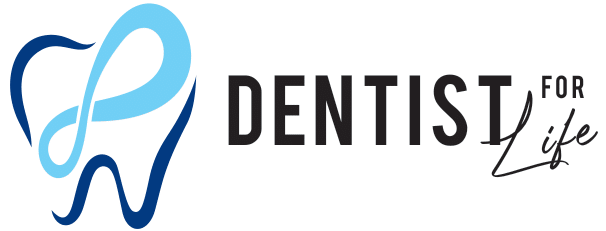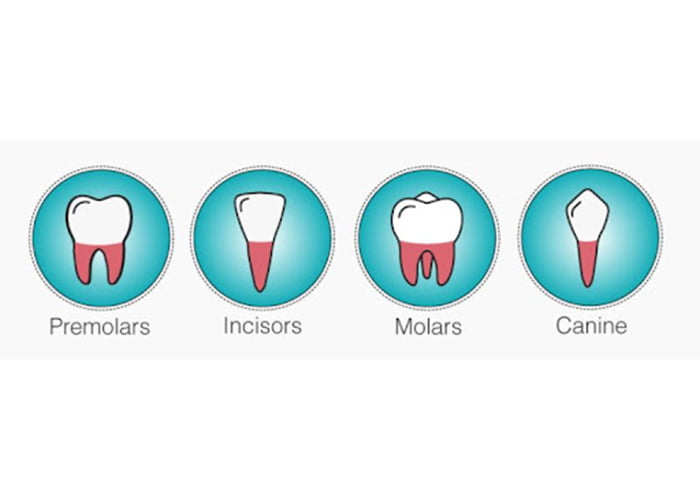Teeth are an essential part of our body, enabling us to bite, chew, speak, and smile with confidence. But did you know that there are different types of teeth in our mouth, each with its own shape, size, and function? Understanding the different types of teeth is crucial to maintaining good oral health and identifying any potential dental problems. Follow the article below of Dentist in Marysivlle | Dentist For Life for better understanding.
Human Teeth Diagram
Human teeth are an essential part of the body, enabling us to eat, speak, and smile with confidence. They are hard, calcified structures that are anchored into the jawbone by roots and surrounded by gums.
Unlike some animals, such as pythons and pelicans, humans can’t swallow their food in one gulp. Instead, our teeth are responsible for breaking down food into smaller pieces, making it easier to swallow and digest. These hard, calcified structures come in different types, each with their own specific functions, including cutting, tearing, shearing, grinding, and crushing.
Adults typically have 32 teeth, divided into four types: incisors, canines, premolars, and molars.
- Incisors are located in the front of the mouth and are used for cutting and biting food.
- Canines are located next to the incisors and are used for tearing and shredding food.
- Premolars are located between the canines and molars and are used for crushing and grinding food.
- Molars are located at the back of the mouth and are used for grinding and crushing food.
See more: First signs of wisdom teeth coming in
Babies are born toothless, as their primary source of nutrition is mother’s milk. As they begin to wean, milk teeth gradually start to appear, with all 20 primary teeth typically in place by age 3. The first primary teeth to develop are the lower incisors, followed by four canines and eight molars. Proper dental hygiene is essential for maintaining healthy teeth and gums, including regular brushing, flossing, and dental checkups. This process usually occurs by the age of 12.
-

Human Teeth Diagram
Types of teeth
Adult humans have 32 teeth in total. Types of teeth include eight incisors, four canines, eight premolars, and 12 molars (including four wisdom teeth).
Incisors
Incisors are the four front teeth in the upper and lower jaw, typically the first to erupt in the mouth. They have a thin, sharp edge for cutting and come in contact with food first during chewing. The two central incisors in the upper jaw are usually the largest teeth in the mouth, while the lateral incisors on either side are slightly smaller. The four lower incisors are similar in size and shape to each other. Incisors are also important for speech, helping to form certain sounds and pronunciations.
-
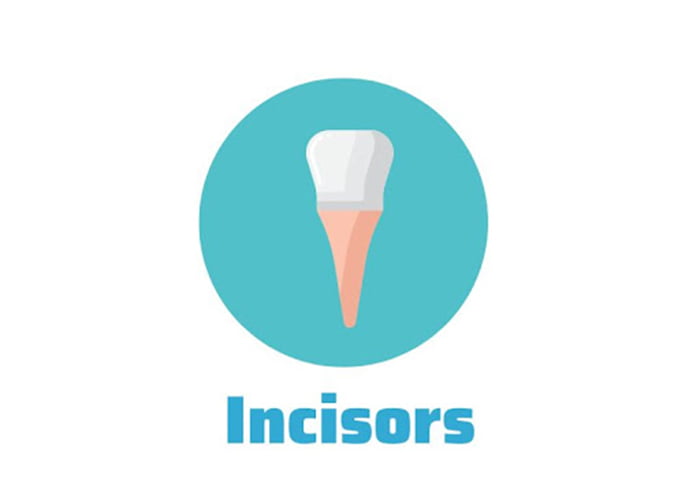
Incisors teeth
Canines
Canines are the four pointed teeth located next to the incisors, also known as cuspids or eyeteeth. They have long roots that anchor them firmly in the jawbone and are among the last teeth to fully erupt. Canines are used for tearing and ripping food, and their pointed shape allows them to grasp and hold onto food as it is being torn. Canines also play a role in facial aesthetics, providing support for the lips and contributing to a symmetrical appearance.
-

Canines teeth
Premolars
Premolars are the eight teeth located between the canines and molars, also known as bicuspids. They have two pointed cusps or bumps on their biting surfaces that help to break down food, making them important for chewing and grinding. Premolars are typically larger and stronger than incisors and canines, but not as large as molars. They are often used for biting into tougher foods like meat and nuts.
Read more: Teeth whitening at-home remedies
-
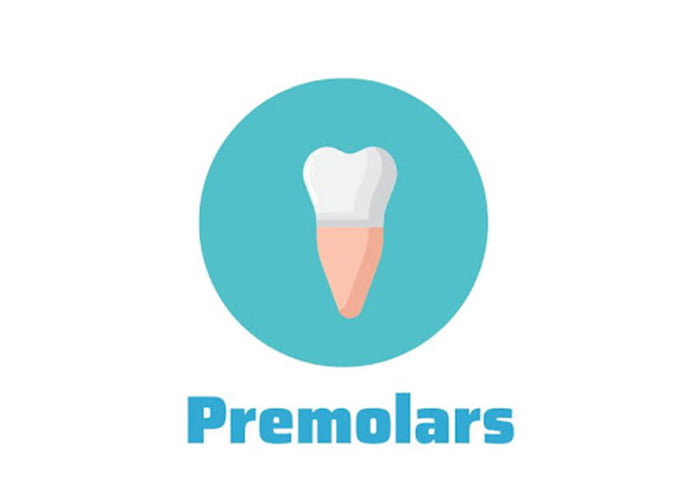
Premolars Teeth
Molars
Molars are the 12 back teeth located in the upper and lower jaw, usually the last to erupt. They have a broad surface with multiple cusps or bumps that help to crush and grind food into smaller pieces. Molars are the strongest teeth in the mouth and are designed for heavy-duty chewing and grinding. The first molars, also known as six-year molars, usually erupt between ages 6 and 7, while the second molars, or 12-year molars, typically come in between ages 11 and 13.
-
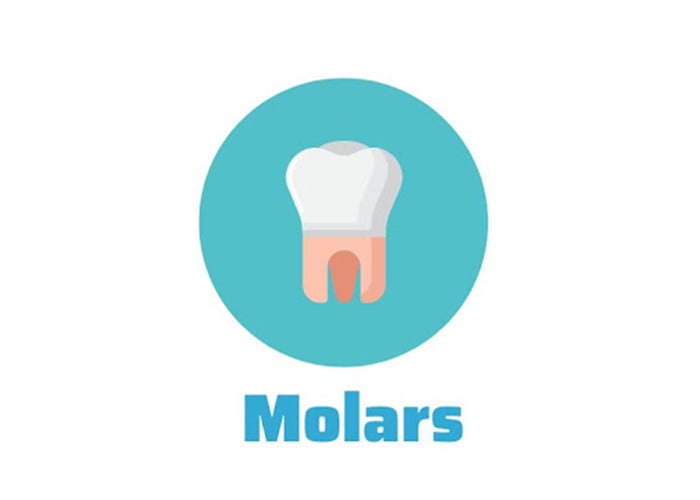
Molars teeth
Third Molars
Third molars, also known as wisdom teeth, are the last teeth to develop and typically erupt between the ages of 17 and 25. Not everyone develops wisdom teeth, and those who do may experience problems with crowding, impaction, or infection. In some cases, wisdom teeth may need to be removed to prevent these issues.
Frequently Asked Questions
Which tooth is used for tearing food?
The tooth used for tearing food is the canine tooth. Canines have a pointed shape and are located next to the incisors in the corners of the mouth. They are used to grasp and tear food, especially meat.
What is the third tooth called?
The third tooth is commonly known as the “wisdom teeth” or “third molars.” These teeth typically emerge in the late teenage years or early adulthood, and their development can cause pain and discomfort, leading to their removal in many cases.
How many teeth do humans have?
Adult humans have 32 teeth in total, including 8 incisors, 4 canines, 8 premolars, and 12 molars (including 4 wisdom teeth). However, children have 20 primary teeth, also called deciduous teeth or “baby teeth.” These include 8 incisors, 4 canines, and 8 molars. The primary teeth are gradually replaced by permanent teeth, which start to emerge around the age of 6 and continue to develop until early adulthood.
Exceptional dental care in the center of Dentistforlife
Dentistforlife is a top-tier dental clinic that offers exceptional dental care in the center of town. Dentistforlife uses the latest technology and techniques. It is equipped with state-of-the-art facilities and amenities to ensure patients have a pleasant and stress-free experience. With a team of highly skilled and experienced dentists, patients can expect to receive the best possible care for their oral health needs.
